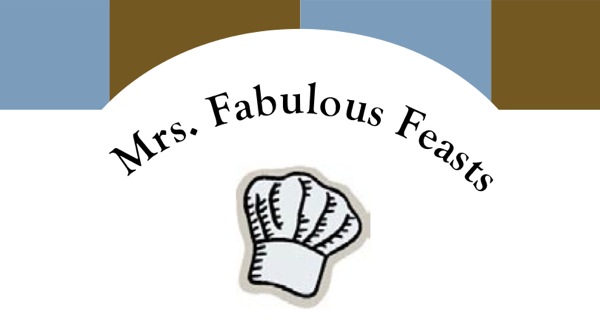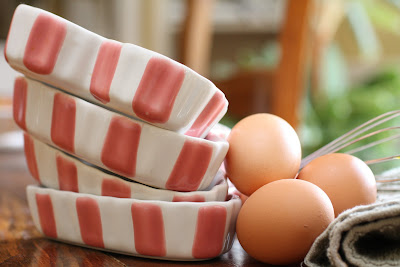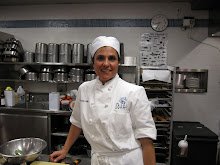I haven't said much about Level 3 and now that we are eleven weeks into it and I've regained a slice of my confidence back, I can talk about it. One of the first things Chef Veronica told us about Level 3 is "this is where a lot of people start to question, 'what am I doing here' or 'do I really want to do this' because it starts to look more and more like a real work situation and reality hits."
Reality. Like bringing in two dishes per night at timed intervals. Like having to prepare two recipes the day before and create a timeline for completing each recipe so that you can multi-task and get your four perfect plates up to the "judging" table when they are being called for. Like exact plating, "hot food, hot plate, cold food, cold plate" and also doing this with a partner who may or may not agree with your timing and instincts.
The first few weeks did not feel good. My partner was a woman who was just joining the class after a leave of absence of several months, so I didn't have the easy familiarity I'd established with most of my young classmates. And whatever confidence I'd built up during levels 1 and 2 flew out the exhaust fans as my partner and I brought in sloppy dishes, late dishes, overcooked, undercooked and misplated messes all while trying to get used to Chef V's tougher, dryer, less playful teaching style.
But something happened right around week 8 when I was due to take on the dessert station and do Pot de Creme as one of my solo dishes for the night. Pot de Creme is pure alchemy. It embodies the magic of cooking for me. Just 4 simple ingredients.
A few basic steps. Some heat, a little bit of time and you have spun gold. A golden, creamy custard that makes you moan, just a bit, when you take your first bite. I'm not saying there was no stress that night with the Pot de Creme, but the stress came mostly from the razor thin Tuile (tweel) wafers we had to make to go along with the custard, and the little matter of the lemon tart that had to come in before the Pots. But when Chef V said mine had "excellent texture and flavor"and were "exactly as they should be" I knew I'd turned the corner in Level 3.
Make these and feel the way I did that night, and this afternoon when I made them again and took these photos. Just like a real chef.
Pot de Creme (adapted from the French Culinary Institute Level 3 textbook)
14 oz. milk
4 egg yolks
2.5 oz of sugar (little over 1/4 cup)
1 t. vanilla extract
14 oz. milk
4 egg yolks
2.5 oz of sugar (little over 1/4 cup)
1 t. vanilla extract
Preparing the Custard:
1. Place the milk in a saucepan. Add the vanilla extract. Bring to a boil over medium heat. Watch it so it doesn't boil over.
2. Separate the eggs. Save egg whites for another use. Combine egg yolks with the sugar in a medium sized bowl. Beat the yolks and sugar until they take on a pale yellow color. (The French term for this is blanchir.)
3. Once milk is boiled, slowly add it to the egg mixture, stirring as you add it. You don't want to add it too fast and "cook" the egg. Use a paper towel to blot up any foam that was created from the mixing or milk boiling. You want your custard to have a smooth, glassy look to it. If you leave the foam on there, the bubbles will burst in the oven and leave your custard all swiss-cheesy looking.
Baking the Pots de Creme:
1. Preheat the oven to 325. Bring a pot of water to a boil.
2. Fill 4 porcelain ramekins/pots (you could use small pyrex bowls too) with equal amounts of the custard mixture, only filling them about 1/2 or 3/4 of the way full. Cover each with a piece of aluminum foil with a few tiny holes poked in the foil. Make sure the foil does not slope down and touch the custard. The little holes will let any condensation escape and not drip down and ruin the surface of your custard.
4. Find a roasting or baking pan that will fit the pots of custard. Make sure it is level. Line the pan with parchment paper so the pots won't slide around.
Place the pan on the rack in the oven FIRST. Then carefully transfer the filled pots to the pan. Using a measuring cup or a gravy boat, pour the boiling water into the pan so that it comes up about halfway up the pots of custard. This is called a "bain marie"—a water bath—and it will insure even and gentle cooking of the custard.
5. Bake for 40 minutes. You know the pots de creme are done when the surface of the custard no longer shakes loosely when you jiggle them. (Don't jiggle the whole pan! You don't want water from the bain marie to slosh up into your custard. Just gently jiggle one pot to test it....but 40 minutes should do the trick.)
6. Remove the pots de creme from the bain-marie, and cool. Once they come down in temperature a bit they should be cooled in the refridgerator and served cold. But you'll want to taste them when they are warm. Resist. Serve with a biscotti, a fancy cookie or simply as is. Enjoy!








3 comments:
YUM! Very enticing photo's as well!
Wow, the pictures say it all. Your blog just jumped several levels this week. interlacing the pictures with the text, makes it seem like a Food Magazine website. Great work. Bravo! Can't wait to try it.
Yet another talent of Mrs. Fabulous - photography! Love the pics!
Post a Comment